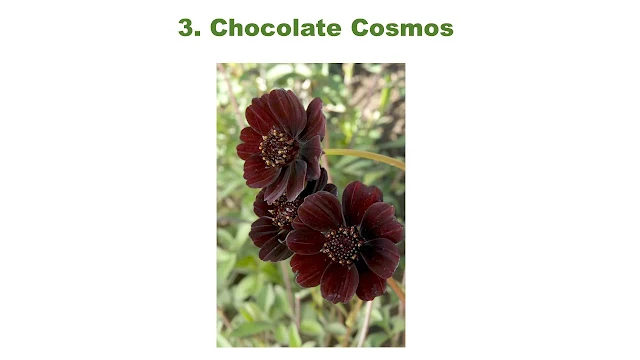Amazing black flowers
These dark colored flowers are sure to make a statement in your landscape or vase. Black flowers rarely occur in nature, but when they do, they are showstoppers. If you look closely, you will see that their petals are very dark red or purple in color. Nevertheless, these ink-colored flowers can turn heads in moody bouquets. And in the garden, they're perfect for a farmhouse-style planting, where they add depth, intrigue and mystery.
The following plants produce some of the most striking black flowers you can grow in your garden. Most of these varieties are winter hardy in many parts of the country, so they return every year. Their blooms last up to two weeks in a vase, a plus for gardens and cut flower arrangements.
1. Black Dahlia
Dahlia is a fan-favorite black flower during the fall months in seasonal arrangements. Its faint blooms make it a garden staple when it blooms in late summer through fall.
2. Queen of the Night Tulip
An easy bulb to grow, the 'Queen of the Night' tulip makes a dramatic addition to containers, beds and borders. In late spring, its velvety, near-black flowers are especially eye-catching when combined with white or yellow flowers.
3. Chocolate Cosmos
Although these summer flowers are deep burgundy, they look almost black from a distance. This perennial plant grows best in containers, but can fill your garden with larger flowers such as dahlias or lilies. Chocolate cosmos emits a scent similar to red velvet cake, adding a great fragrance to floral arrangements.
4. Black bat flower
Native to the tropical regions of Asia, black bat flowers can survive outdoors in subtropical climates. In colder regions, move them indoors for the winter, where they make intriguing houseplants. Whiskery flowers usually appear in summer through fall.
5. Watchman Hollyhock
This type of hollyhock looks stunning in borders or at the back of beds. It blooms in mid to late summer on tall, sturdy stems, and its large, almost black flowers attract all kinds of pollinators.
6. New York Night Hellebore
This perennial lends an air of mystery to your garden as it begins to bloom in late winter. The flower's deep purple color and yellow center make wonderful combinations in floral arrangements.
7. Black Baccara Rose
'Black Baccara' is a miniature hybrid tea rose that blooms from spring to fall. Its velvety burgundy petals darken like black flowers as they age. Its long, sturdy stems last up to two weeks in a vase.
8. Knight Rider Lily
Large, sash-forming, deep violet 'Night Rider' hybrid lilies add strike to containers and flower beds. Each stem produces several buds that open in early to mid-summer. Upward-facing flowers also work well in cut arrangements.
9. Black Knight Sweet Peas
One of the darkest varieties of sweet pea, 'Black Knight' has deep red flowers that look like black flowers in the shade. These climbing annuals add a strong fragrance when they bloom for several weeks from spring to summer.
Other unique plants and garden ideas
Revamp your backyard with unusual plants and garden ideas that add an unexpected and delightful touch. These purple-leaved plants can be contrasted with green leaves to enhance both colors. White hydrangeas may not be as compact as their pink and purple counterparts, but they are just as beautiful. Silver-leaved plants make a statement and expand into lush foliage, whether in borders or beds. For a bold statement, go with a monochromatic garden.
Water shortage
Using less water is an important component of sustainability, especially in water-scarce and restricted areas. Geriscaping, a gardening and landscaping method that minimizes the need for irrigation, includes a variety of attractive drought-tolerant shrubs and perennials. Install a rain barrel at the base of one or more downspouts to collect water from Mother Nature to use for your plants.
Plant tribes
Knowing how to grow a sustainable garden includes knowing which plants to use. Stable plants are native to your region and are also called native. These native plants take less labor, generally require less water, and thrive better than other perennials because they are already adapted to your climate, rainfall, and soil types. Additionally, native plant species provide food and shelter for native insect and bird populations.
Go organic for sustainable gardening
Going organic is an integral part of sustainable gardening. Using fewer chemicals in your garden is more ecological and cost-effective. If you're growing food for your family, gardening organically is even more important. Start from the ground up by creating good soil rich in nutrients and adding organic compost to improve the soil. If you find insect pests or plant diseases in your garden, treat them with organic solutions.




















0 Comments